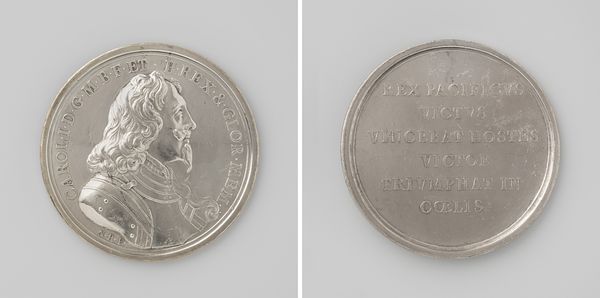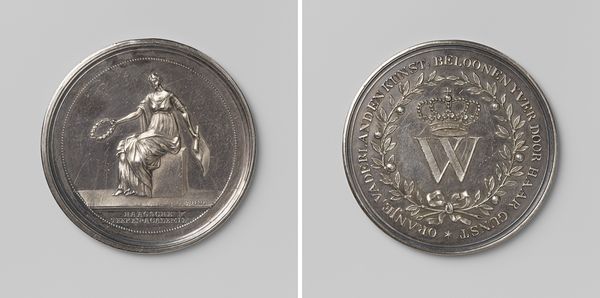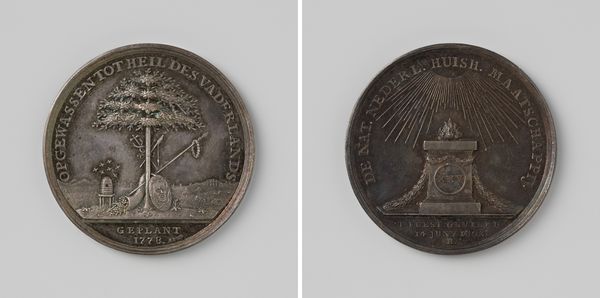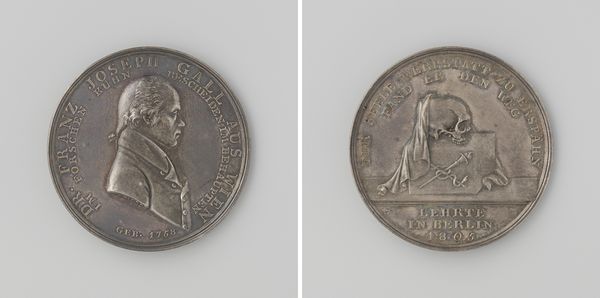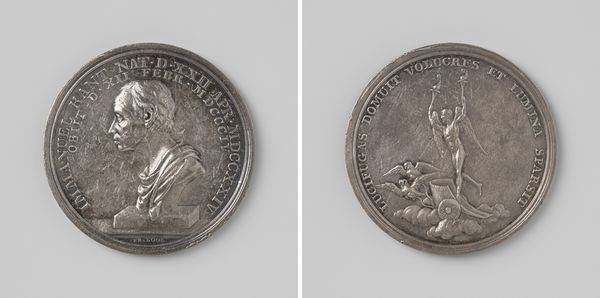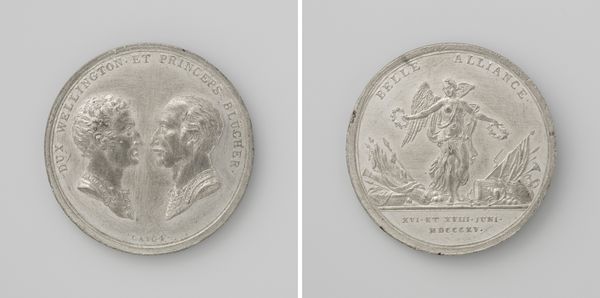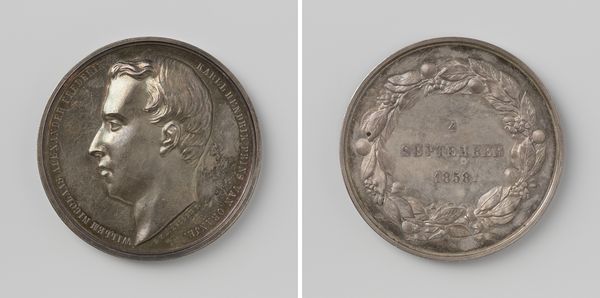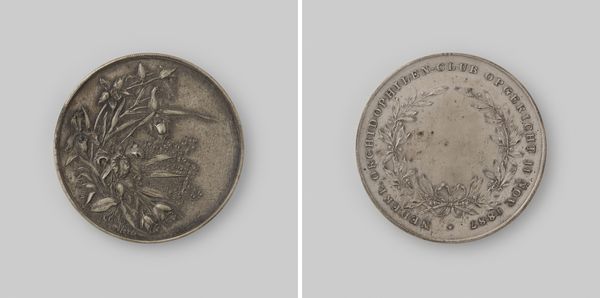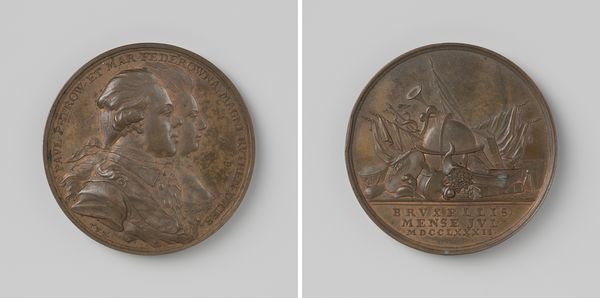
Slagen bij Quatre-Bras en Waterloo, ter ere van de hertog van Wellington en Blucher 1815
0:00
0:00
metal, relief, sculpture, engraving
#
neoclacissism
#
metal
#
sculpture
#
relief
#
sculpture
#
history-painting
#
engraving
Dimensions: diameter 3.4 cm, weight 13.41 gr
Copyright: Rijks Museum: Open Domain
Curator: Alright, let's dive into this work. Editor: This is "Battles of Quatre-Bras and Waterloo in honor of the Duke of Wellington and Blucher," a metal relief engraving from 1815. It’s quite small and austere, depicting these two figures facing one another, with text surrounding them. I’m immediately drawn to the almost stoic formality. How do you interpret this piece? Curator: I see this as more than just a commemorative medal; it's a potent piece of propaganda embedded in a specific historical and social context. Consider the period: Europe is attempting to rebuild after the Napoleonic Wars. This piece hails Wellington and Blucher as saviors, these partnerships between nations were complex and built on power dynamics that are not always represented. How does celebrating these leaders and this victory influence perceptions of power, particularly for marginalized communities? Editor: That's a compelling point. I hadn't considered the role of propaganda so directly. Are there particular elements of the composition that support that reading? Curator: Absolutely. The visual language here borrows heavily from Neoclassicism, which, at the time, was associated with notions of order, reason, and imperial power. By presenting Wellington and Blucher in this style, the artwork reinforces a specific narrative about their leadership and the supposed "triumph" of their cause. Who were the victims erased from this narrative? What perspectives are silenced? The glorification of these historical figures must be counterbalanced by remembering those that were underrepresented. Editor: That’s very insightful. Thinking about whose stories are *not* told definitely gives a whole new dimension to the work. Curator: Exactly. Art, even something as seemingly straightforward as a commemorative medal, operates within complex historical power dynamics and societal relations, and that must always be central to the narrative we bring forward. Editor: This really does give me a new appreciation for the cultural contexts and social narrative present in art! Curator: And for me, seeing your response as a modern viewer reinforces how these historical works continue to engage with and shape our contemporary understanding of power.
Comments
No comments
Be the first to comment and join the conversation on the ultimate creative platform.

